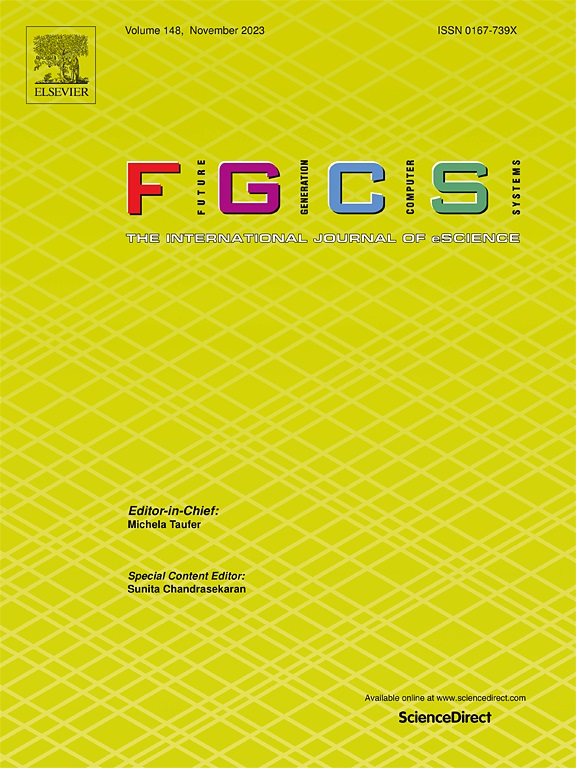PIM-IoT:在物联网系统中实现分层、异构和敏捷的内存处理
IF 6.2
2区 计算机科学
Q1 COMPUTER SCIENCE, THEORY & METHODS
Future Generation Computer Systems-The International Journal of Escience
Pub Date : 2025-02-28
DOI:10.1016/j.future.2025.107782
引用次数: 0
摘要
物联网(Internet of Things, IoT)是通过将各种“事物”和物体连接到互联网上来感知物理世界的新兴概念。传统的基于云的物联网系统不太可能满足物联网应用的多样化需求,并且存在一些问题,例如隐私和延迟。基于边缘计算的物联网系统通过在数据源附近放置数据处理和推理任务来解决这些问题。然而,由于物联网应用的复杂性日益增加,在基于边缘计算的物联网系统中执行数据处理和推理任务可能导致高能耗和延迟。内存中处理(processing -in- memory, PIM)是一种很有前途的解决方案,它通过将计算逻辑与存储设备紧密集成来降低数据处理和推理任务的能耗。因此,在本文中,我们提出PIM-IoT,一种PIM架构使物联网系统能够降低能耗。为了适应各种数据处理任务,我们将PIM-IoT架构为一个分层系统,该系统由3层组成:感知层、网关层和边缘计算层。我们首先分析典型物联网应用程序的数据流,并将任务映射到不同的层。为了有效地处理每一层的数据处理和推理任务,我们为每一层提出了分层、异构和协作的PIM体系结构。最后,我们将展示如何在延迟和功耗限制下对多层进行协同优化。据我们所知,这是探索物联网系统中新颖PIM架构的第一项工作。详细的分析和实验结果表明,在物联网应用中,PIM-IoT可以实现5.6倍的性能提升和6倍的能耗降低。本文章由计算机程序翻译,如有差异,请以英文原文为准。
PIM-IoT: Enabling hierarchical, heterogeneous, and agile Processing-in-Memory in IoT systems
The Internet of Things (IoT) is an emerging concept that senses the physical world by connecting various “things” and objects to the Internet. Conventional cloud-based IoT systems are unlikely to keep up with the diverse needs of IoT applications and have some issues, such as privacy and latency. Edge computing based IoT systems solve these issues by placing data processing and inference tasks near the data source. However, due to the increasing complexity of IoT applications, performing data processing and inference tasks in edge computing based IoT systems can lead to high energy consumption and latency.
Processing-in-Memory (PIM) is a promising solution to reduce the energy consumption of data processing and inference tasks by closely integrating computational logics with memory device. Therefore, in this paper, we propose PIM-IoT, a PIM architectures enabled IoT system to reduce the energy consumption. To accommodate various data processing tasks, we architect PIM-IoT as a hierarchical system that consists of 3 tiers: sensing tier, gateway tier, and edge computing tier. We first analyze the dataflow of typical IoT applications and map tasks to different tiers. To handle the data processing and inference tasks effectively in each tier, we then propose hierarchical, heterogeneous, and collaborative PIM architectures for each tier. Finally, we show how multi-tier can be co-optimized under latency and power constraints. To our knowledge, this is the first work to explore novel PIM architectures in IoT systems. Detailed analysis and experimental results show that PIM-IoT can achieve 5.6x performance improvement and 6x energy consumption reduction for IoT applications.
求助全文
通过发布文献求助,成功后即可免费获取论文全文。
去求助
来源期刊
CiteScore
19.90
自引率
2.70%
发文量
376
审稿时长
10.6 months
期刊介绍:
Computing infrastructures and systems are constantly evolving, resulting in increasingly complex and collaborative scientific applications. To cope with these advancements, there is a growing need for collaborative tools that can effectively map, control, and execute these applications.
Furthermore, with the explosion of Big Data, there is a requirement for innovative methods and infrastructures to collect, analyze, and derive meaningful insights from the vast amount of data generated. This necessitates the integration of computational and storage capabilities, databases, sensors, and human collaboration.
Future Generation Computer Systems aims to pioneer advancements in distributed systems, collaborative environments, high-performance computing, and Big Data analytics. It strives to stay at the forefront of developments in grids, clouds, and the Internet of Things (IoT) to effectively address the challenges posed by these wide-area, fully distributed sensing and computing systems.

 求助内容:
求助内容: 应助结果提醒方式:
应助结果提醒方式:


